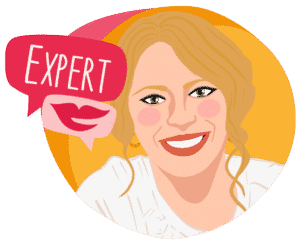3 Powerful Ways To Overcome Limiting Beliefs At Midlife
While certainly not unique to mid-lifers, limiting beliefs can add to a hefty list of uncomfortable thoughts that haunt us during a period of life already fraught with uncertainty and change. From “No one will be interested in my idea. Who am I kidding?” to “My body and brain have lost their edge. I’m timing out”, the possibilities are endless. And even when we run out of ideas, we manage to find new ways to doubt ourselves. But we can choose to do midlife differently.
What are limiting beliefs?
Limiting beliefs are stories we create and believe about ourselves that hold us back. Although rarely based on fact, we choose to adopt them as such and then behave based on these fictional narratives. In the process, we keep ourselves small and stuck.
This is a topic that often comes up when I’m speaking to women’s leadership groups and networking organizations, so much so that I often open with it by asking, “Who here suffers from limiting beliefs?”
A multitude of hands usually shoot up or the chat starts buzzing with shares. And what I often notice is that the women feel like victims rather than stewards of their limiting beliefs. But the reality is, we are willing participants in these troublesome thought patterns.
Let’s be clear—this is in NO way a criticism. We all tend to believe our thoughts rather than question them. But limiting thoughts and beliefs, unlike feelings, are choices we make, and we have the power to make different choices that serve us better. Not unlike Dorothy in the Wizard of Oz—who travelled the entire Yellow Brick Road before realizing she had the power to return home with a mere click of her ruby heels. The trick is in finding ways to stop holding ourselves back and to start clicking.
Check your mindset
It starts with adopting the right mindset—that is, the view we have of ourselves and our capabilities.
In her book Mindset: The New Psychology of Success, Stanford University professor Carol Dweck PhD shares her research findings on how profoundly mindset can influence our life experience. In a fixed mindset, she explains, we believe that our qualities and abilities are pre-determined and set in stone, so to speak. Alternatively, in a growth mindset, we believe that our basic qualities can be changed and cultivated through our own efforts. She writes, “Although people may differ in every which way—in their initial talents and aptitudes, interests, or temperaments—everyone can change and grow through application and experience.”
Limiting beliefs are grounded in a fixed mindset, an “it is what it is” frame of mind that can hold us back from trying new things or reaching outside of our comfort zone. When we view ourselves in this way, we tend to view failure as deterministic—as a “sign” that we shouldn’t be doing the thing we’re trying to do—which only discourages us from trying again. In a growth mindset, however, failures represent opportunities for learning and part of the iterative process of reaching whatever goals we have set for ourselves.
So, next time, instead of saying to yourself, “It’s too late to re-enter the workforce“, try changing your thoughts into a positive statement that is reflective of a growth mindset by saying: “I will research companies and roles that could benefit from my wisdom and experience“.
You have a choice
“You have a choice,” Dweck writes, “Mindsets are just beliefs. They’re powerful beliefs, but they’re just something in your mind, and you can change your mind.” She suggests, “think about where you’d like to go, and which mindset will take you there.”
Here are three strategies for shifting out of the limiting belief patterns born of a fixed mindset:
-
Create a new story
Limiting beliefs stem from narratives we create in our minds—that may or may not be true. Try creating a different story that makes you feel better in your skin. If, for example, you’re considering launching a new business idea, instead of predicting what will go wrong, envision what will go well. It’s not about feigning fake positivity, but rather about resolving to move forward into possibility instead of remaining stuck in negative perceptions.
-
Get curious
Being open and willing to learn will elevate you out of limiting belief patterns and spark a sense of adventure. Consider this example: You’re feeling stuck in an unhealthy relationship dynamic with your romantic partner, but resist broaching the subject because of assumptions you have made that the discussion will end badly or fail to lead to any positive change. Instead, try injecting a healthy dose of curiosity by embracing the possibility of creating a stronger bond. By sharing your feelings in an open, respectful, and honest way, you will pave the way for your partner to do the same and empower you both to build a deeper connection.
-
Make a learning journal
Limiting beliefs not only hold you back from trying new things or experimenting with new ideas, but they also close you off from new discoveries and experiences. When we convince ourselves that the limiting thoughts are meant to protect us, we can end up missing out on what life has to offer. Instead, choose to forge ahead and accept the possibility that you might not be good at the new thing you want to try right out of the blocks, but you are sure to learn something in the process. Create a “learning journal” in which you can add lessons and discoveries at the end of each day to bolster your sense of adventure and fuel growth rather than limiting beliefs.
Start clicking
When it comes to shifting limiting beliefs, know that practice makes things possible. The more you choose empowering thoughts, the stronger those neural pathways in your brain will become and the more habitual it will be to choose the same thoughts next time. While limiting beliefs may still emerge from time to time, practising different choices will leave you better able to repeat the process going forward.
By clicking midlife’s ruby heels together, you’ll empower yourself to embrace your journey as a blank canvas instead of as a chapter carved in stone.
Like this post? Support Us or Sign up to our newsletter to get more articles like this delivered straight to your inbox!






